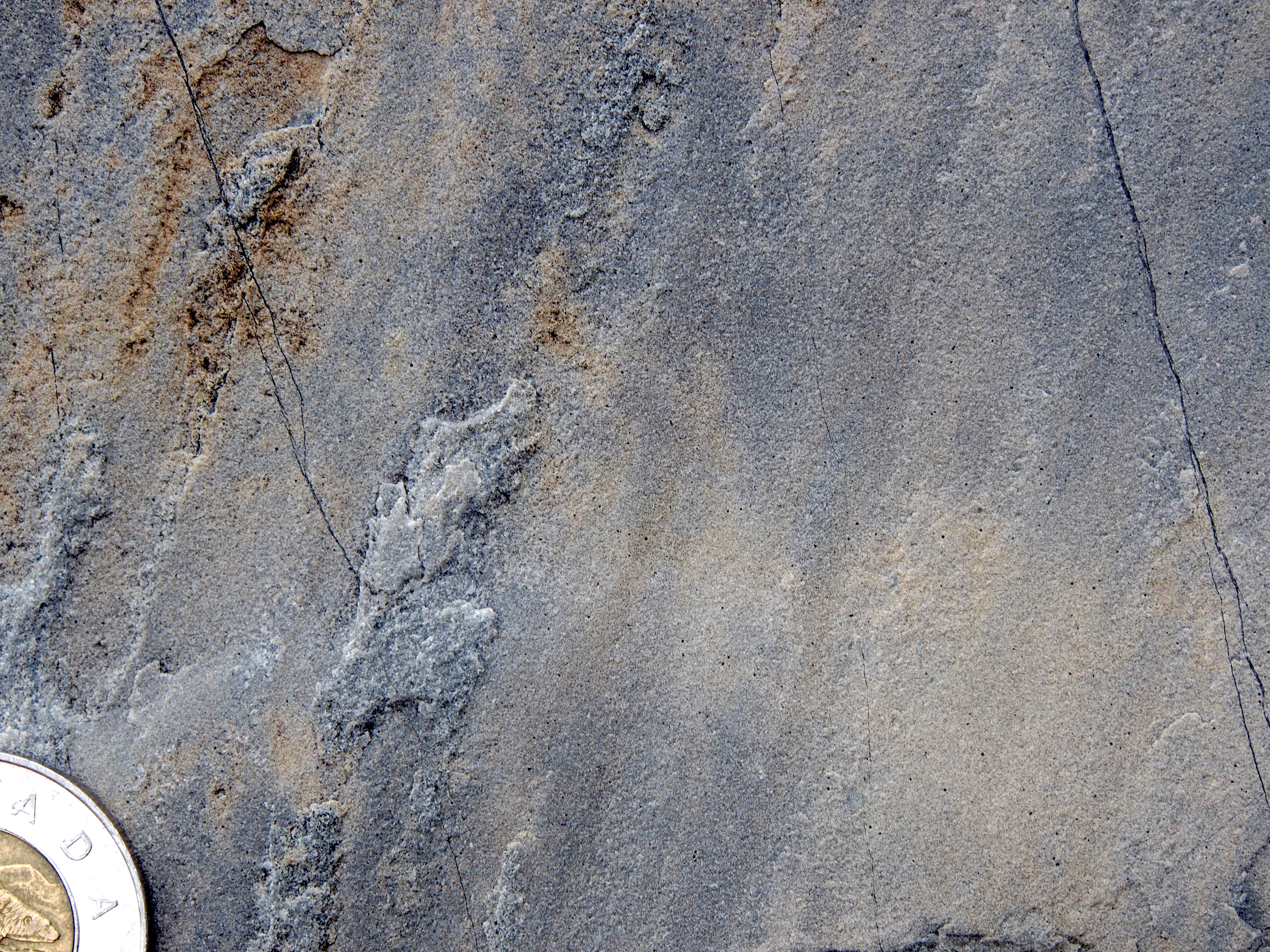Cross-lamination produced by current ripples, Quaternary fluvioglacial sands, Lothian, Scotland. The cross-lamination here includes both 'normal' (non-climbing) cross-sets and climbing-ripple cross-lamination.
 Tough cross-bed, characteristic of deposition in lunate dunes. Wolfville Formation (Triassic), Nova Scotia
Tough cross-bed, characteristic of deposition in lunate dunes. Wolfville Formation (Triassic), Nova Scotia
Tabular cross-bedding produced by eolian dunes, Wolfville Formation, Red Head NS (Photo © David R. Brown)
Primary current lineation (also known as parting lineation) characteristic of deposition by rapid currents. Green Point, NL.








